This is Flannery.
She is four.
She is determined.
She is strong-willed.
She is very independent (probably my second most independent after Calvin).
Teaching her to read is going to be an adventure.
So this is my post on Flannery. I wish this picture were bigger, but you can see from the picture below that she can smile and be darling, and generally she is. She is always darling when I read to her.
These are some of her favorite books right now:
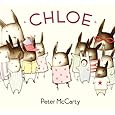
Chloe by Peter McCarty
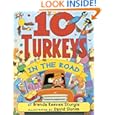
10 Turkeys in the Road by Brenda Reeves Sturgis
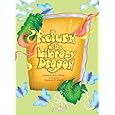
Return of the Library Dragon by Carmen Agra Deedy (we are so excited about this book—it's a sequel to Library Dragon which we love. It's pure book propaganda!!!)
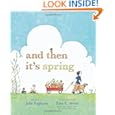
and then it's spring by Julie Fogliano and Erin Stead (I am quite taken by Erin Stead and her collaborators. Beautiful pictures with tiny details kids love to find and laugh about. This is such a cute book—Flannery loves that one of the seeds grows a cookie plant and another grows bones. And the page where the birds eat the seeds is hysterical.)
Flannery wants to be read to all the time, as much as possible. She's willing to let siblings read to her, but she hates it when they sniff because she can "hear their buggers."(Is that how you spell buggers?)
This is what we try to do most days to teach her how to read:
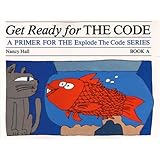
This is book A in this fabulous series. It teaches the letters and the sounds they make and it does it incrementally and carefully and the pictures are great. There are three books that teach the letters and their sounds, and then the Explode the Code series Book One moves on with teaching how to blend. I really believe these workbooks are so effective, you can use them and nothing else to teach these basic phonic principles. Check out the workbooks for older kids if your child needs extra reading practice. Just keep reading out loud to your child every day as much as you can! Nothing is a replacement for that.
I'm going to go off on a limb here—especially because my husband sells educational software to schools that teaches children how to read (he he)—but the best way to teach a child to read is NOT with a computer program.
It may work. The child may learn their sounds, they may learn to blend, they may learn to decode text, but will that make it easy for them to sit still and read a book that doesn't interact or talk back to them or flash pictures?
No.
I know this is a workbook. I know. People hate workbooks. They hate workbook pages. I am generally in that camp. But when you are doing the careful, slow work of teaching a child the foundations of reading, it's okay to use paper and a pencil. It's okay to use black and white illustrations, and then, when they've finished their page, they can color it.
I used to stress out a lot about teaching my kids to read. I don't any more. At the same time, I always try to get them reading pretty well before Kindergarten starts (there are pros and cons to this), but I refuse to rely on schools to teach my kids how to read, simply because teachers have too many students to really understand where my children's holes are and what help they need.
Besides, nothing is better than sitting by your child and snuggling up with them while you teach them how to read. The key, though, is the snuggling. And not getting angry. Or pushy. Or stressed. If you are feeling that way, stop reading with your child immediately! You want every association with reading, especially at home, to be positive. I will say that again in italics: You want every association with reading, especially at home, to be positive. (This goes for older kids as well. If this isn't happening, if you are on your child about their reading homework every night and they hate it and there is contention—pray for inspiration! You will come up with something great and startling that will surprise you and your child.)
Here are what I see as the *clicks* in reading. It has gone like this (like clockwork) for all four of my kids who are now readers and who I taught to read:
1-they can recognize their letters
2-they can recognize the letter sounds
3-they can blend the first two letters in a word
4-they can put a whole word together
5-then there's a period of time when they grow in their ability to decode. They get better at it, they maybe learn some sight words, but reading still has not taken off. This is a long, slow stage, and it can be really frustrating, because reading has not clicked. They cannot yet look at a word and say it without having to sound it out. There is nothing to do at this stage but wait. Read with them and wait. Read to them more than you read with them. Read to them as much as possible. This will speed up the process more than anything!
6-CLICK! ahhhhh. They can read. They can pick up a simple book and read without having to sound out every word. Bliss. Now's the time when practicing can speed up. When you can begin to devote more time to them reading aloud or to them reading to themselves, as long as you pay attention to their burnout/frustration level. When that hits—go back to reading out loud to them.
7-Suddenly, they begin reading to themselves. You catch them, without being forced by you, sitting with a book, mouthing the words to themselves. Bliss again.
8-This is the last click, and it can happen late or early. Shaemus is just beginning to get through this click right now. It's being willing to read books with lots of words on a page. The only way to push through this phase is to get them books that engage them so much, they don't care how many words there are on that page. They love it and they want to keep reading. That's why, at this stage, so many of the books are series books. If a kid loved one Clementine book, they'll want to read the rest, no question.
I'm going to include a great website I also use to help my kids learn how to read. It is basically an online library of a million leveled readers going all the way up to the sixth grade, plus phonics books. You can print these books off or read them on the computer, and really, they are pretty good. And they have some great nonfiction—always important. You start your child off early reading non-fiction, they won't balk at it later. The fee for a year's access to these books is $85.00, but once the books are printed off, they're yours.
http://www.readinga-z.com/
So that's my opinionated, overly-confident analysis of working with beginning readers. I know all kids are different, and I don't mean to imply that teaching them how to read will look the same. It won't. But these clicks are pretty across the board. This is the order that things generally happen, and I posted it here so you can be patient. I remember feeling soooooo frustrated with Mary when she was in the decoding stage, and she couldn't really read yet. It seemed to me that she was somehow doing it on purpose (poor Mary!)! After that, I learned that this just takes time, but slow and steady win the race.
We'll see how Flannery does. Right now she'd much rather spend time being read to than working on reading, but that's okay. We can buckle in during July before Kindergarten. Until then, we'll take it easy!


No comments:
Post a Comment